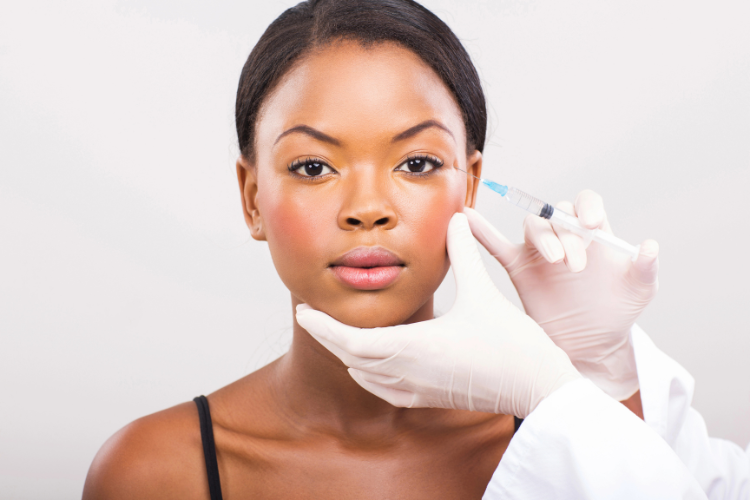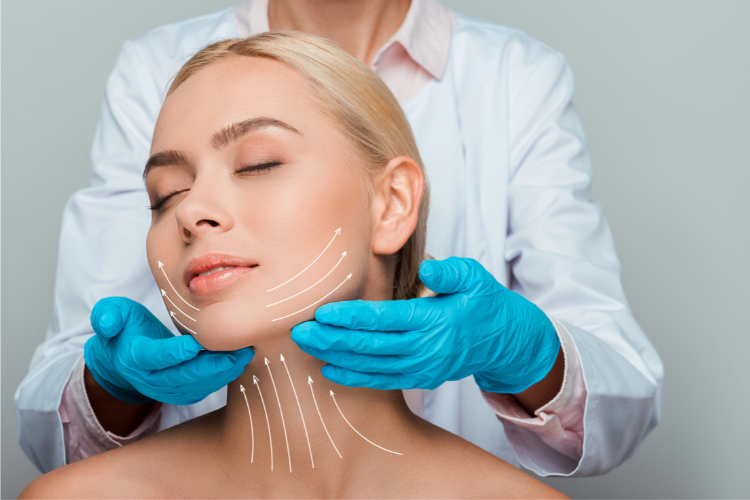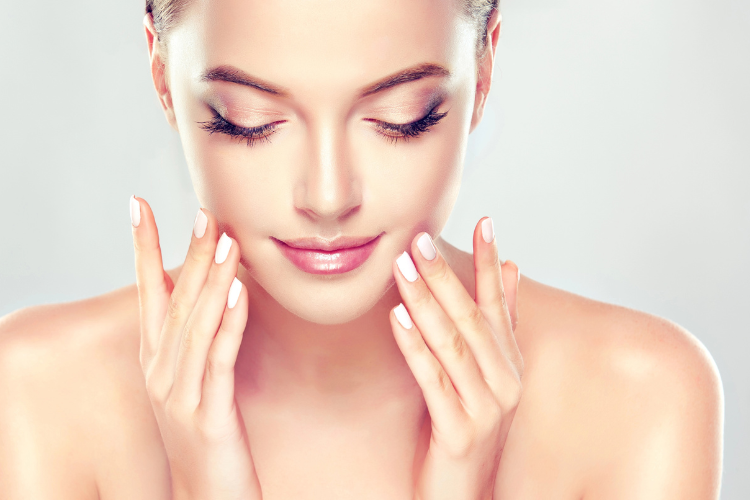When Should You Get Botox? Expert Advice for Wrinkle Prevention
Are you thinking it might be time to get Botox?
You’re far from alone. In fact, Botox currently reigns supreme as the world’s most popular nonsurgical cosmetic procedure. In 2023, over 8.8 million Botox injections were administered by plastic surgeons alone.
If you’ve never received Botox for wrinkles before, it’s common to wonder about when the time is right: Start too early, and perhaps you’re jumping the gun, a preemptive strike against wrinkles that haven't fully materialized. Wait too long, however, and you might see those lines that etch themselves too firmly onto your face.
Botox, the well-known brand name for botulinum toxin type A, has become a cornerstone of corrective and preventive aesthetic treatments. Not only does this injectable smooth away existing wrinkles, but Botox can help prevent those lines from deepening in the first place.
We'll also share expert recommendations for different age groups and skin types to get an idea of what your med spa professional will provide for your customized anti-aging Botox treatment plan.
How Does Botox Work for Wrinkles?
Botox is a purified neurotoxin derived from the bacterium Clostridium botulinum. When strategically injected in minute doses into muscles, it temporarily blocks the nerve signals that cause these muscles to contract.
Botox treatments target dynamic wrinkles, aka the lines and folds that appear on the skin’s surface from repetitive muscle movements.
Dynamic wrinkles include the lines that form around your eyes when you squint or smile (crow’s feet), horizontal lines on the forehead when you raise your eyebrows, and vertical lines between your brows when you frown (glabellar lines or “elevens”).
Over time, with years of repeated muscle contractions, these temporary lines can gradually become more pronounced and eventually become permanent creases, even when your face is at rest.
By limiting the activity of these targeted facial muscles, Botox will minimize the repetitive movements that lead to dynamic wrinkles. Thus, it can prevent fine lines from evolving into more stubborn, permanent creases.
5 Signs It’s Time to Consider Botox
While there’s no magic age etched in stone for starting preventive Botox treatments, certain signs can indicate that it might be a beneficial consideration. Here are the top five:
1. Early fine lines around the eyes (crow’s feet)
If you notice these lines appearing even when your face is relaxed, particularly after smiling or squinting, it could be a sign that the underlying muscle activity is starting to leave its mark.
2. Forehead lines
Similar to crow’s feet, if you see subtle horizontal lines lingering on your forehead, even when your eyebrows are still, this suggests the skin is beginning to lose some of its elasticity and bounce back less effectively from muscle contractions.
3. Frown lines between the brows
These vertical lines can develop even in younger individuals who tend to furrow their brows when concentrating or expressing certain emotions. Addressing the underlying muscle activity early with Botox can prevent these lines from becoming deep and prominent.
4. Makeup settling into lines or uneven skin texture
If you find your foundation or concealer consistently settling into fine lines, making them more noticeable, it can be an early indicator that the skin’s surface is no longer as smooth as it once was due to underlying muscle activity.
5. Family history or lifestyle factors (sun exposure, expressive faces)
Genetics plays a role in how we age, and if your parents developed wrinkles relatively early, you may be predisposed to the same. Similarly, significant sun exposure and highly expressive facial habits can speed up dynamic wrinkles, making early intervention a proactive step.
Botox by Age: What Do the Experts Recommend?
While individual skin conditions and goals vary, here are some general expert recommendations for considering Botox at different stages of life, helping determine the best age to start Botox:
In Your 20s: Preventive Botox
For people in their twenties, particularly those with very expressive faces or significant risk factors like excessive sun exposure or a family history of early wrinkles, “baby Botox” is often recommended in smaller doses for early prevention.
The goal at this stage isn't to eliminate existing wrinkles (as they may not have manifested yet) but to subtly limit muscle activity and delay the onset of future lines. This helps to maintain smooth skin and prevent the formation of wrinkles before they even become noticeable.
In Your 30s: Fine Line Softening
By the time many people reach their thirties, early fine lines may have started to appear and become slightly more noticeable. This is often an ideal time to begin Botox treatments to soften early lines before they deepen into more established wrinkles.
Strategic injections in areas like the forehead, around the eyes, and between the brows can help you preserve natural movement while preventing these early signs of aging from progressing.
In Your 40s and Beyond: Wrinkle Correction & Prevention
In the forties and beyond, wrinkles may be more established. Botox at this stage can still play a significant role in softening existing lines and preventing the formation of new ones.
However, Botox is often used as part of a more comprehensive anti-aging strategy that may also include dermal fillers like Juvederm for volume loss and laser resurfacing treatments to improve skin texture and tone.
In this era of life, treatment focuses on correcting existing signs of aging and proactively preventing further wrinkle development.
So, What’s the Best Age to Start Botox?
There is no universally accepted “perfect age” to start Botox. The decision is one of individual preference and depends on your skin condition, lifestyle factors, genetic predispositions, and personal aesthetic goals.
Benefits of Starting Botox Early
- Delays the development of deep-set wrinkles.
- Maintains smoother skin longer without drastic treatments later.
- Requires less product over time and consistent maintenance.
- Supports overall anti-aging regimen when combined with skincare and sun protection.
Risks of Waiting Too Long
- Deeper wrinkles may require more extensive correction.
- Botox alone may not be enough for advanced signs of aging; fillers or resurfacing treatments might be needed.
- Consistent preventive care is generally more cost-effective than corrective treatment.
What to Expect During Your Botox Consultation
The first step on the Botox journey, whether for prevention or correction, is a comprehensive consultation with a qualified and experienced injector. First, the injector will carefully evaluate your facial anatomy, muscle movement, and any existing lines and wrinkles.
You’ll have the opportunity to discuss your specific concerns and what you hope to achieve with Botox treatment. Your med spa professional will also explain how Botox can help you achieve your desired look based on your facial structure.
Based on the assessment and your goals, a customized treatment plan outlines the appropriate dosage, specific target areas for injection, and the recommended frequency of treatments.
An experienced, skilled injector will prioritize achieving natural-looking results that enhance your features without restricting your facial expressions, for a look that’s refreshed and more youthful, not artificially frozen.
FAQs: Botox Timing & Prevention
Can I start Botox too early?There’s no medical harm in starting Botox in your early twenties, but it’s generally recommended for people beginning to see signs of dynamic wrinkles or with strong risk factors.
How long does Botox last?The effects of Botox typically last for approximately 3 to 4 months. Individual metabolism and dosage can influence the duration of results.
Will starting early make me dependent on Botox?Botox does not cause physiological dependence. When the effects wear off, muscle action will gradually return. Maintaining a smoother appearance may require continued treatments.
How often should I get Botox for prevention?For preventive Botox, treatments are often less frequent and may involve lower doses than corrective treatments. Many individuals find that treatments every 4 to 6 months are sufficient to maintain a smooth appearance and prevent lines from deepening.
Can Botox erase existing wrinkles?Botox is most effective at softening dynamic wrinkles. While it can improve the appearance of fine lines, deeply etched, static wrinkles (those visible even when the face is at rest) may require additional treatments like dermal fillers.
or laser resurfacing. Understanding Botox vs fillers for wrinkles helps clarify this.
Is Botox safe for all skin types?Yes. Botox is approved by the FDA and is generally considered safe for all skin types and ethnicities.
What’s the difference between Botox vs. fillers for wrinkles?Botox temporarily relaxes muscles to smooth dynamic wrinkles caused by movement; fillers add volume to fill static wrinkles present at rest. They address different types of wrinkles and achieve different results.
Find Out More About Botox Treatment in Lakewood Ranch
Botox for wrinkles is no longer solely a treatment for correcting wrinkles you already have. It’s the world’s most popular non-surgical cosmetic procedure because of its highly effective anti-aging effects.
By strategically limiting muscle activity before deep lines become established, patients can effectively delay visible signs of aging to maintain smoother, youthful-looking skin for longer.
The best age to start Botox is not dictated by a specific age, but rather by the individual’s unique skin condition, lifestyle factors, genetic predispositions, and personal aesthetic goals.Ready to begin? Schedule a consultation today with the best Botox provider in Lakewood Ranch at Elite Med Spa.




